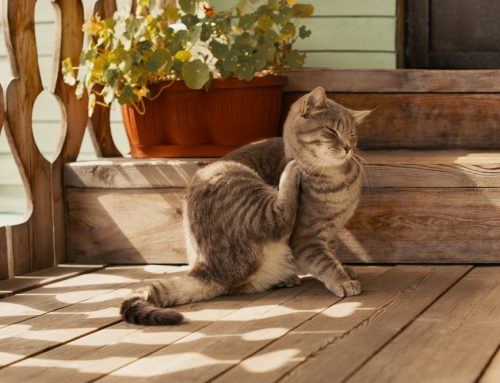Have you noticed your beloved pet pawing at their eye or squinting more than usual? A red or irritated eye can be concerning for any pet owner. While not every case signals a serious problem, it’s crucial to understand the potential causes and seek veterinary attention to ensure your pet receives the appropriate care.
In this article, we’ll delve into the common reasons behind red eye in pets, explore available diagnostic and treatment options, and provide helpful tips for prevention.
Understanding Red Eye in Pets
Red eye in pets occurs when the blood vessels on the surface of the eye become enlarged or inflamed. This can happen for various reasons, ranging from mild irritations to serious underlying conditions. Because your pet’s eye health is so important, any noticeable change in appearance, such as redness, cloudiness, discharge, or swelling, warrants a visit to the veterinarian.
Ignoring these symptoms can potentially lead to short- or long-term complications and compromise your pet’s vision. Early detection and treatment are key to ensuring the best possible outcome for your pet’s eye health.
Common Causes of Red Eye in Pets
Several factors can contribute to your pet developing a red eye. Here are some of the most common culprits:
* Conjunctivitis: This condition, also known as pink eye, involves inflammation of the conjunctiva – the thin, transparent membrane that lines the inner eyelid and covers the white part of the eye. Conjunctivitis can be caused by viruses, bacteria, allergies, or irritants, and it often leads to redness, discharge, and discomfort.
* Allergies: Just like humans, pets can suffer from allergies to various environmental triggers like pollen, dust mites, and mold. These allergens can irritate the eyes, causing redness, itchiness, and watery discharge.
* Injuries: Trauma to the eye, even something as seemingly minor as a scratch from a blade of grass or a playful paw swipe, can cause redness, pain, and sensitivity to light. It’s essential to seek veterinary attention immediately for any eye injury, as prompt treatment can help prevent infection and potential vision loss.
* Glaucoma: This serious condition involves a buildup of pressure and pain within the eye, potentially leading to vision loss if left untreated. Redness, cloudiness, dilated pupils, and squinting are common signs of glaucoma. Early diagnosis and treatment are crucial for managing this condition and preserving your pet’s vision.
Diagnosing Red Eye in Pets
Determining the underlying cause of your pet’s red eye requires a comprehensive veterinary examination. Our veterinary team will conduct a thorough eye exam using specialized instruments to evaluate the structures of the eye, measure pressure in the eye, and assess tear production.
We may also recommend additional tests, such as blood work, to rule out underlying systemic diseases that might be contributing to the eye problem. Accurate diagnosis is crucial for creating a tailored treatment plan that addresses your pet’s specific needs.
Treatment Options for Red Eye in Pets
Treatment for red eye in pets depends entirely on the underlying cause.
* Medications: Bacterial infections are typically treated with antibiotic eye drops or ointments. Antiviral medications may be prescribed for viral infections. If allergies are the culprit, antihistamines or steroid eye drops can help reduce inflammation and itching.
* Home Care: In addition to prescribed medications, we may recommend supportive home care measures, such as applying warm compresses to the affected eye to soothe irritation and gently cleaning away any discharge with a clean, damp cloth.
Preventing Red Eye in Pets

While not all causes of red eye are preventable, you can take steps to minimize your pet’s risk:
* Regular Check-ups: Routine wellness visits are essential for detecting potential eye problems early on, when treatment is most effective. During these visits, our veterinarians will examine your pet’s eyes for any signs of abnormalities and discuss preventative measures.
* Hygiene and Environment: Keeping your pet’s face clean, especially the area around the eyes, can help prevent irritation and infection. Regular grooming can also help minimize allergens, stray hair, or bacteria that might trigger eye irritation.
We’re Here to Help
Red eye in pets is a common concern, but with proper care and attention, most cases can be easily managed. If you notice any redness, discharge, or changes in your pet’s eye appearance or behavior, don’t hesitate to contact Town & Country Animal Hospital. Our compassionate team is committed to providing exceptional eye care to keep your pet’s eyes healthy and vision clear. Schedule an appointment today.







Leave A Comment